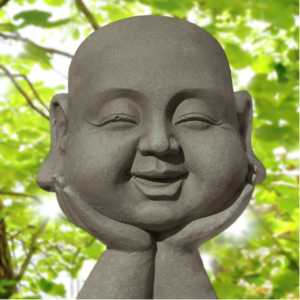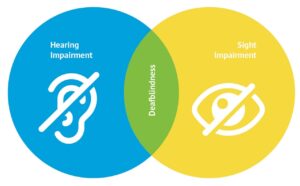A few weeks ago, The Entertainer invited me to experience the recently opened MCM Conscious Mental Wellness ( MCM Dubai), which has just become a partner. “MCM Dubai also started offering Eye Movement Desensitization and Reprocessing (EMDR). Is that something you’re interested in exploring, Natalia?”
100%! I’ve learned a lot about EMDR from a former client, now friend, and experiencing it on my own was on my “adventure-list”. The only question left was “Will I emotionally connect with the psychologist? Do they have similar values as I have?”
I checked out MCM’s well-designed web page, saw a highly relatable quote by Carl Jung
Until you make the unconscious conscious it will direct your life and you will call it fate.
and learned that the Managing Director Jana was from Germany. Bingo! That all screams yes. Within less than a week I found myself sitting in Jana’s office in Barsha Heights.
The introductory session
“We’re born codependent on our parents. And they did the best they can. Yet they made mistakes. They have blind spots and we, as individuals, interpret situations in specific ways.” Jana explained.
“Little and big traumas are often rooted in our childhood and such moments. Big traumas could be war, a car accident or physical abuse. Small traumas the fear of flying or publicly speaking. For me, EMDR is a wonderful tool to eliminate little traumas.” Note to myself: I like that woman. We’re speaking the same “language”. 🙂
Jana continued: “I’ll teach you about two concepts today: the container and safe space. I want you to practice them for a week before we meet again and deep dive into your fears, ok?” Sure, yalla!
Exercise 1: The safe space
An exercise we do in our heads. It helps us manage something that is happening or that is “just” in our minds. The beauty of it? The exercise gives us time to calm down our nervous system before we act upon the situation/thought or not.
BTW, if you don’t like the term safe space, call it differently: Sacred spot, comfy corner, happy place. Be as creative as you want.
The place itself can be an imaginary place or real. It “shouldn’t” be an environment where something “not so good happened” or could happen. Also: It “should” be without other people. The beach, woods, mountains or somewhere in space. Allow your creativity to go wild.
Jana then started guiding me. To respect your time, I won’t share all my answers with you, just the questions:
- What are you doing? Sitting, walking, swimming? Something else?
- What do you see around yourself?
- What do you hear?
- What do you smell?
- What sensations do you notice? E.g., the wind of your face? The velvet of a couch?
- How’s the temperature like?
- How do you feel?
Once we “arrived in that place”, we started practicing “landing there”. “When a painful memory comes up in the next session, I want you to go to that place.” Jana continued:
“What’s your fave ice-cream? And would you eat it out of a cup, from A cone or stick? … I want you to imagine that you’re having your ice-cream. Bring up the image of your ice-cream in your mind. Focus on your ice-cream, feel the taste in your mouth and now go to your safe place… How did it go? How was the transition?”
Easy.
“Now, try this on something that happened recently. In EMDR we work with a 1-10 stress/upset scale. 10 is something completely catastrophic. 0 doesn’t bother you. I want you to practice on a stress level from 1-2. Example: Being stuck behind a bus, breaking a fingernail. What got you upset on a scale from 1-2?”
Yep, I got one.
Jana: “I’m going to task you to watch a movie in your mind of that incident from just before it happened until it ended. Notice how it feels. Let me know when you are done… NOW, Watch the movie again and pause it when you feel the upset and go to your safe space. How did it go?”
Brilliant! What a great pattern interrupt tool. Because sometimes a (social) situation doesn’t allow us to fully go into an emotion for whatever reason.
BTW, this tool is NOT about dissociating or completely avoiding a situation. But a pragmatic solution when life is busy, to give our nervous system a break and to act kinder to ourselves.
Exercise 2: The container

We continued with exercise 2, a resource to “park” thoughts or experiences. Again, this exercise is NOT meant to avoid or deny reality. But a tool for our brains to handle (almost) any situation, calm down and then decide how we maturely handle that situation.
Jana told us that our personal container can have any color, shape, size, material. It needs a lid that crews or snaps, must be rock solid, and it can be as ridiculous as possible. She continued:
- What kind of a container can you think of that can hold something upsetting in the moment; or a thought that pops up in your mind?
- What’s your container made of?
- What color is the container?
- Which shape is your container?
- Are there any words or designs on it?
- Is the container clear or see-through?
- What’s the texture?
- What kind of lid does the container have?
- Where can you put the container once it is full and closed?
- Having a special word helps some people to bring up the container, what is yours?
- Say your keyword and bring up your container. How did it go?
Again, “magic” and super fun. We then practiced with the ice-cream and a level 2 incident scenario as described above.
Exercise 3: Me, myself and I
Jana reminded us that there are many parts of us (ha – the timing! I’ve talked about this in my last newsletter, remember?). The three most common – Jana called them “ego states” – are:
- The loving, compassionate adult
- The inner child
- The inner critic/judge
According to Jana the first aspect is driven by compassion, love and logic. That’s a mode we’re in when we interact as grown-ups, for example in a job interview. She then invited us to give that part a name.
“What’s your most lovable moment you can think of as a child?” Jana continued. “My face in a bowl of food. And more food in both of my hands. The sensory stimulation is insane. I’m blissing out on all the sensations. Haha.” I answered. Jana: “Perfect. How old are you?” Me: “Approx. 3”. Jana: “That’s your inner child.
I’m sure you felt connected, safe, loved, didn’t you? The inner child is all about emotions, desires, wishes, physical and emotional needs. And – to simplify things – there is anger, fear, joy and sadness.” Jana also asked us to give that part a name.
Then it was time to understand the inner judge. The most critical, impatient and rude voice. Jana gave the following example to illustrate how the three parts tend to interact for most people and what the anticipated end result could look like:
“Imagine the inner child version of you is here. She’s curious, wants to run around the table and touch the candle. While the critical voice might state something like “Stop running. Don’t touch it. You’ll hurt yourself.” The loving parent might say “My love, the flame is hot. It can hurt. If you experience pain, I’ll be there for you. Same message just a different approach and a different reaction from the child.
Our goal is to reduce the critical voice to 10% and raise the loving parent voice.
Ideally the scenario looks like this: Notice the critical voice, swap to the loving parent. She allows the inner child to express herself (I feel…), then talk to the critical voice in a compassionate way. PS: The inner child can also be seen as the purpose of life, the loving adult is the facilitator.”
Boom! Another mind-blowing moment. That’s what I’ve done this summer during my radical transformation. I’ve “slayed my inner judge”, allowed my inner child to express herself and “gave birth” the loving parent aspect, which was dormant in me for years.
Next steps

Jana showed me the technical tool she’d use in our next session and gave me a glimpse into what I can expect:
“Whenever a trigger comes in, the trauma gets activated in you. EMDR bypasses (your) logic and allows us to heal the core wound. I’ll – amongst others – ask you: What was the first time you’ve experienced this? What was the worst incident regarding this matter you can think of? We’ll get you in the right state to replace old beliefs with new once that serve you and take it from there. After the session I advise you to relax. Any questions?”
We closed the intro session with a recap, constructive feedback and arranged a 1,5-hour EMDR session.
The EMDR session
“How did the exercises unfold throughout your week, Natalia?” Jana asked the next time we met.
“They helped a lot. I once got triggered on a level 8 (the “classic” abandonment wound) – heartbeat up, a burning sensation in my chest, sweaty palms. In the past, I would go through feelings of anxiety and fear. Now, I was able to mentally go into my sacred, safe space, put the thought into my container, lock it and throw it off a cliff to the bottom of the ocean. I could regulate my nervous system and was back in “healthy mode” in less than a minute. Fabulous!”
Jana and I then identified the “mini trauma” we wanted to work on. I decided to go for a situation during one of my swimming lessons when I was a child. An older kid kept on pushing me under water and I felt like I was drowning. Although I was screaming and asking him to stop whenever he allowed me a few seconds above water, neither him, nor the other kids, nor the adults (!) standing close to the pool did A.N.Y.T.H.I.N.G. They just smiled or laughed and kept on talking/doing their thing. While I felt like battling with death…
After that, Jana and I identified the wrong belief, which resolved out of this experience (“I’m not safe”), and the new belief I would like to manifest on a core level (“I AM safe”.). We also tested the intensity level of the fear. Do I need to mention that I already slightly started sweating and feeling ewww at that moment? 😉
In a next step Jana introduced me to the tool, which would help me through the session. A headset with two knobs for my hands. The knobs release a slight vibration, the headset a tone. First left, then right. Left, right, etc. We also tested what kind of tone and which intensity level of the vibration felt good to me.
I made myself feel comfortable sitting on the sofa, got two big pillows left and right next to me and with the guidance of my therapist slowly, but surely “deep dived” – pun intended. Haha – into the experience.
Describing the next 45-60 minutes in detail would be boring, because EMDR works with repetitive patterns and loops. So, here’s the gist of it:
I was surprised by how quickly I could go back into the situation in my mind, replay the scenario and tap into my unprocessed emotions. They were quite diverse: I went through fear, terror, despair, anger, and rage; as well as revenge, defiance, lust to kill and gratitude, forgiveness and liberation towards the end – just to mention a few.
There I was, physically sitting in Dubai, in a beautiful office, while emotionally re-experiencing a trauma that had occurred 30 years ago with the help of my creative mind:
Crying, sobbing, shivering, screaming, stomping, punching into pillows, almost “Hulk-smashing” those two plastic knobs into pieces. Haha. At the pinnacle of the release, I coughed and kept on coughing heavily – trying to get imaginary water out of my chest and lungs…I was sure I’d either pass out or vomit. None of this happened, of course…
Isn’t the mind a fascinating device? The whole experience, although it technically “only” took place in my head felt very real to me. As if it was happening right there in that moment. Yes, it was scary and uncomfortable. But the feeling of peace and liberation in the end – priceless!
My conclusion

When I think about the incident now, I don’t feel any intense emotions anymore. Just a few days after the session, I could even for the first time stand next to a waterfall without tensing up or feeling my heart beating faster. This session again reminded me that
no emotional pain is SO big that it will “kapoof” you out of existence.
Instead of suffering and going through pain on our own, we can work with a professional, using a tool like EMDR to help us process the unprocessed, to heal and recover faster.
The good news is that with EMDR you don’t need to talk about everything. You just share short fractions of what’s happening in your mind/the scenario. When you’re not keen on sharing your emotions or when this is rather new to you, EMDR can be extra helpful.
Our bodies remember, and our ego is very clever in creating disempowering stories around intense emotions, which have a negative impact on how we think, act and behave. And that has a negative impact on how we perceive reality and the “amount of magic” and love we attract into our lives. So, start doing the inner work. It is worth it!
A few final words
Thank you, The Entertainer and MCM Dubai for this incredible experience, for your wisdom, kindness and generosity.
And you, dear reader, I hope this article encouraged you to seek for professional guidance when your mind keeps on running the show, when you feel depressed, anxious, burdened and/or when you stopped feeling anything at all. These are messages of your soul trying to tell you that a radical change is required.
You have the power to turn your biggest fears and insecurities into your greatest blessings; your darkness and “inner monsters” into purity and light – once you choose to face and transform them. Will you…?
With deep, universal love from the “other side of the tunnel”,
Dr. Natalia Wiechowski





